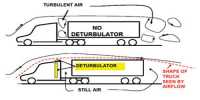From our general knowledge, we know a rubber tape elongates along its length when it is pulled. As soon as the tape is released of the tension it regains its original length or tends to get back its previous length. Here pull means the application of force and elongation in length means deformation. Actually, as deformation of a body occurs, a resistive force generates within the body for which it tends to get back its original size and shape.
Elasticity is defined as the attributed property by which a body is able to resist deformation, either in shape or in volume or both and recovers its original shape and size when the deforming force is removed. The substances which possess this property are called elastic substances. There is a certain limit of the deforming force and if the force applied exceeds the limit the body then unable to regain its previous shape and size. This limit of the applied force is termed as elastic limit.
The molecules of a substance move away from each other when the external force is applied to elastic bodies. Original length, volume or size and shape of a body are changed due to this applied deforming force. The change per unit length or per unit volume of an object is called strain. Whenever an external force deforms a body, an internal resistive force will develop inside the body due to its elastic property. This opposing force comes into play to resist the applied external force. This developed internal restoring force acting perpendicularly per unit area of the body is called strain.
Hooke’s law: Scientist Robert Hooke invented the basic law of elasticity. According to this law- within elastic limit stress is directly proportional to strain.
Mathematically we may write,
stress ∞ strain
so, stress = constant x strain.
This constant is called the modulus of elasticity of the material of the body. SThe strain has no unit. The unit of stress is Nm-2. The unit of modulus of elasticity is also Nm-2.














